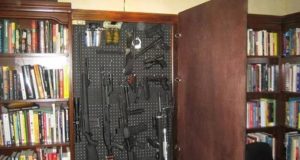You have made the decision to obtain your concealed carry license, but is that enough? In all likelihood, no. Don’t get me wrong; I believe in your right to protect yourself and your family. The problem as I see it, though, begins in the requirements to obtain the license to carry in the first place. In other words, I believe in solid training before you carry on your person. If that means mandated training to obtain your concealed carry license, then so be it.
Twelve states now have constitutional carry, meaning no training is required. Others require a simple application that includes a background check and payment. Some require classroom training only, and then there are those who require both classroom and live fire, such as New Mexico and Texas.
In a nutshell, my belief is carry in your home, your property, your business, your car is all fine. But carrying a handgun on your person in the public every day is a responsibility that should be undertaken with solid training. That’s not to say that training can’t help for home, car and property carry; it does.
Little to no training does not fit the bill for the level of safety and judgment required to effectively carry — and therefore plan to use a gun, if necessary — in public. Outside of your private property, it’s not just your life and your family, but perhaps an innocent person’s life (not to mention your life savings) that could be placed at risk when a gun is mishandled.
Be Prepared. Learn The Best Ways To Hide Your Guns.
Sorry to say that in my experience, even those who have handled firearms their whole life are still a long way from being ready to carry a handgun daily. You are taking on a greater responsibility when you make the decision to carry into the public realm every day.
The following are several ways to address the training concern.
1. Take a credible concealed carry course.
Too often, concealed carry courses are offered with only two to four hours of training and no live fire required. Such a course is absurd, in my opinion. You can’t begin to get a handle on such key issues as gun safety, state laws, conflict avoidance, use of deadly force parameters, and basic defensive shooting in such short timeframes. Any course that is offered with such minimal time requirements and no shooting should be suspect and avoided. Remember the old adage, “You get what you pay for.”
2. Take your training to the next level.
John Farnam, a well-known nationwide firearms trainer, recently said, “Only serious students need apply.” I couldn’t agree more when it comes to serious gun training. Too often, I see students who want to do the bare minimum. Move past this mentality. In today’s world of active shooters, terrorist acts and other real threats, you should be continually proactive in your commitment to training. Beyond concealed carry, look at training such as defensive pistol (to include dim light shooting), force decisions (simulated confrontations) and emergency medical, to mention a few.
3. Find a credible instructor.
In the last couple of years there has been an explosion of firearms and self-defense instructors. Many have seemingly popped up overnight. Do your homework. Ask for proof of state licensing and accreditation. Does the instructor have a well-established background of instruction in firearms and tactics? While I believe current or past law enforcement and military trainers are some of the best, I don’t believe they hold exclusive rights to imparting solid gun training. In fact, I believe that an instructor that came up through the civilian ranks, so to speak, can provide some of the best connectivity to defensive firearms training for the everyday citizen. However, they still need to show a solid background of instructor credentials and a record of ongoing training themselves, in my estimation.
4. Challenge yourself.
Once you have established a good foundation of firearms training, keep challenging yourself, both physically and mentally, in your training regimen. Remember: Shooting is a perishable skill. You can’t go to the range only once every year or two and expect to keep your skills honed. Even dry fire practice, along with malfunction clearance and reload drills in a safe environment, can do wonders for keeping skills sharp. The reality is that it’s not hard to hit a bullseye target at three to 10 yards when you’re under no stress. It’s the dynamic of an immediate threat, multiple attackers, dim-light conditions and a pistol malfunction all at once that you should consider training for. In other words, train for worse-case situations.
Carrying a firearm every day for protection of yourself and others is taking your role as a good citizen seriously. Along with that goes the responsibility to be well-trained and educated in the realm of defensive living.
Do you agree or disagree? Share your thoughts in the section below:
Pump Shotguns Have One BIG Advantage Over Other Shotguns For Home Defense. Read More Here.
 Off The Grid News Better Ideas For Off The Grid Living
Off The Grid News Better Ideas For Off The Grid Living




